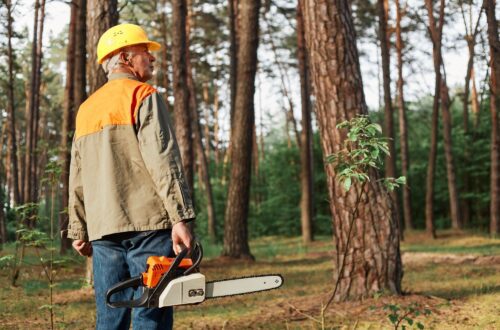How to Get into Gardening as a Total Beginner
Gardening is such a wonderful and rewarding activity that can benefit people of all ages and backgrounds. Not only is it a great way to beautify your home but can also provide you with fresh produce and stunning homegrown flowers and even help you to lead a healthier lifestyle- perfect if you’re not the sort of person that likes traditional exercise at the gym. It gets you outside, gets your body moving, and is fantastic for both mental and physical well-being. But if you’re new to gardening, you might feel overwhelmed by the many options and techniques available to you. However, with a little patience and guidance, it’s really not difficult to become a successful gardener. Here are some of the reasons why gardening is great for beginners and offer some tips for getting started.

Start Small
Don’t overwhelm yourself when you’re first starting out you don’t need a massive greenhouse or a huge allotment, you might have grand plans of what you want to achieve but start small and build your way up. A small garden or even a container garden can be an excellent way to start as it requires less space, time, and effort than a full-scale garden. You can start with just a few plants, such as herbs or vegetables, and gradually expand as you gain experience and confidence. Starting small also allows you to focus on the details such as soil quality and watering as these things can all be more challenging in a larger garden especially when you have no experience.
Choosing Your Plants
The right plants are really important, some are much easier for beginners to grow. It all depends on your climate as to what will grow easily for you, so do some research and make sure it’s specific to the climate zone you live in. For example, in the UK you’re never going to grow a fruiting avocado or banana tree in your garden no matter how hard you try! If you’re a total beginner look for plants or flowers that don’t have too much of a difficult watering schedule and don’t require too many additions to the soil etc.
Understanding Your Soil
Speaking of soil, this is an important thing to consider. First up is sandy soil. This type of soil is super easy to work with because it contains large particles and drains well. However, because it drains so quickly, it’s not great at retaining water and nutrients, which can be challenging for some plants. So, if you’re planning to grow something that needs lots of moisture, like vegetables or fruits, sandy soil may not be the best option. On the other hand, clay soil is quite the opposite. It has tiny particles that hold onto water and nutrients well, making it ideal for growing things like shrubs and trees. However, because it doesn’t drain as well, it can be prone to waterlogging and may not be suitable for plants that need good drainage. Loamy soil is a great middle-ground as it has a mix of large and small particles, which allows it to retain water and nutrients without getting too waterlogged. It’s perfect for growing a wide range of plants, including vegetables, fruits, and flowers. Then you have peaty soil, which is high in organic matter and often used for growing acid-loving plants like blueberries and rhododendrons. The downside to this type is because it’s so high in organic matter, it can be prone to drying out quickly, so it’s important to keep it moist.
What Tools and Equipment to Buy
The right tools will make your gardening process a lot easier. From Redback 40v power tools like leaf blowers, mowers, and hedge cutters, to the right spades, rakes, and shovels. You might want to invest in things like hydroponics, cloches and more depending on what it is you plan on growing. Again, research is key- plan what you want to grow and what sort of equipment, time constraints, and other things you will need to consider. This will improve your chances of success.
Harvest Time
Finally, when it’s time to harvest the fruits of your labor, consider how you will use them! If you have a bumper crop of fruits you could turn them into jams, jellies, and chutneys, can them, or slice and freeze them to use later on. Vegetables and herbs could be cooked into meals and frozen to use later on, or you could find another local gardening fanatic and swap produce so you both have a great mixture.







2 Comments
Pingback:
Pingback: